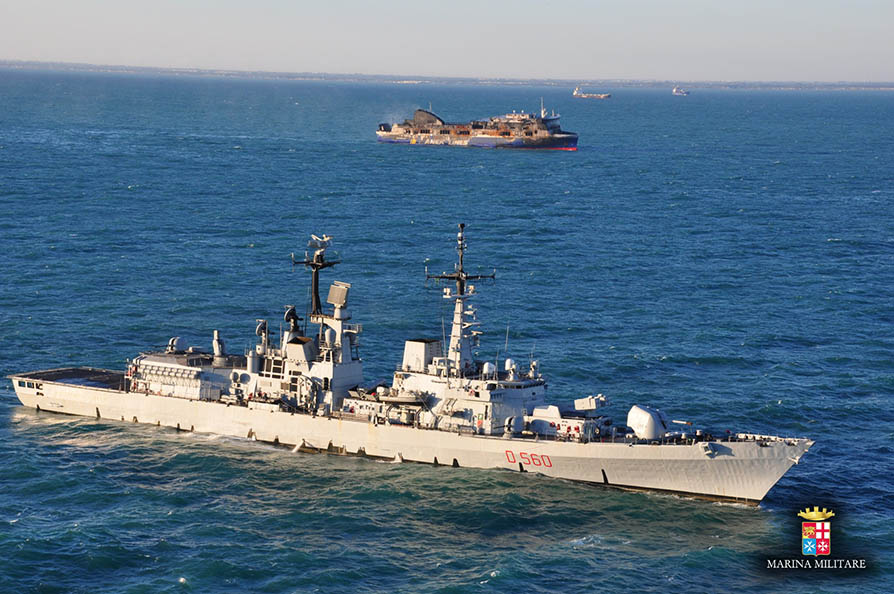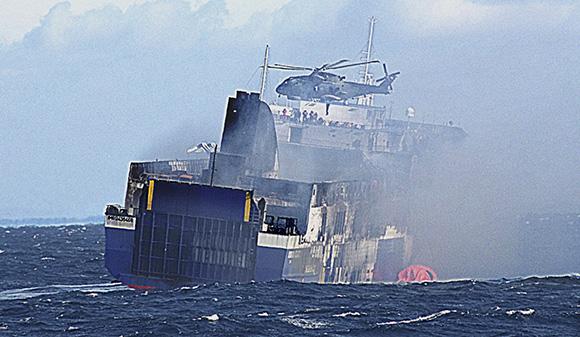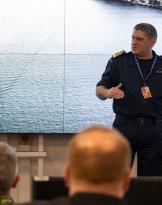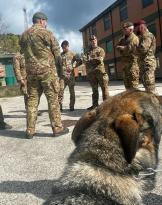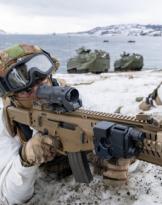28 December 2014, it is dawn when news of a serious fire broke out on board the Italian-flag ferry Norman Atlantic, with about 500 people on board, while sailing from Igoumenitsa (Greece) to Ancona. The ship is located in the Canale d'Otranto, about 30 miles from the Italian coast. The weather conditions in the area are extreme, stormy seas, with waves of 6 meters and winds of up to 40 knots (75 km / h).
The rescue machine starts immediately. While the helicopters of the Navy of the Grottaglie airbase take flight to check the situation on the action scene, the heavy EH-101 helicopters of the Catania base are preparing for take-off to reach the area. At the same time the amphibious vessel St. George, in the port of Brindisi, recalled the crew aboard, most of them at home for the holidays, immediately set sail and headed at maximum speed towards the Norman Atlantic. Shortly afterwards, the destroyer Durand de La Penne will also leave Taranto (photo at the bottom).
After a few hours the vehicles in the area are numerous but it is above all the massive presence of the air component that proves to be decisive for the outcome of the operations: twelve helicopters, of which 7 from the Navy, 2 from the Port Authorities and 3 from the Aeronautica Militare, together with two planes of the Port Authority and one of the Air Force. Among the naval means, in addition to the St. George and Durand de La Penne, 3 Coast Guard patrol boats, 5 civil tugboats and 9 merchant ships.
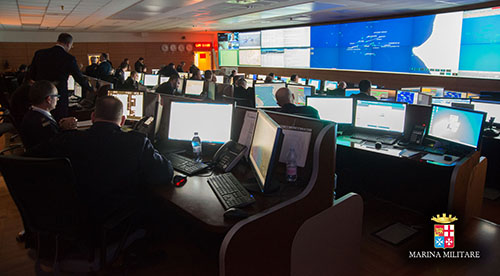 The first concern, from the initial stages, is to be able to evacuate the shipwrecked from the ship in the shortest possible time, also for the concern that the ship may capsize.
The first concern, from the initial stages, is to be able to evacuate the shipwrecked from the ship in the shortest possible time, also for the concern that the ship may capsize.
In the following hours, therefore, a historic enterprise of its kind is accomplished, a very difficult operation, with the recovery of 427 people, most of them with helicopters, while gale winds blow, on a ship under fire, with the flames that sometimes licked even the upper decks.
Strength of the impressive rescue operation, the amphibious vessel St. George, headquarters of the command, coordination and control of the activity. On board the St. George there is the staff of the 3rd Naval Group, under the command of Rear Admiral Pierpaolo Ribuffo. The amphibious ship sails in the immediate vicinity of the Norman Atlantic. On its flight deck the take-offs and landings of the EH-101 helicopters follow one another without stopping, capable of transshipping up to twenty shipwrecked at a time, continuously, during the night and despite extreme weather conditions. The helicopters will carry out a total of 149 flight hours. The transshipment of the shipwrecked from the ferry ends at 14.45 on 29 December, when the next phase begins, with the towing of the burning ship, for transfer to the port of Brindisi.
 The success of the operation largely depended on the action of two fundamental components of the Navy, the air and the naval, together with the means of the Port Authority corps and the Air Force. Another strong point is the transfer on the ferry, from the initial stages of the intervention, by helicopter, of two Air Force aero rescuers, followed by a Navy rescue team, with a pilot, a doctor and a health worker. This made it possible to maintain direct contact, thanks to a satellite phone, an effective and timely vision of what was happening on board the burning ship.
The success of the operation largely depended on the action of two fundamental components of the Navy, the air and the naval, together with the means of the Port Authority corps and the Air Force. Another strong point is the transfer on the ferry, from the initial stages of the intervention, by helicopter, of two Air Force aero rescuers, followed by a Navy rescue team, with a pilot, a doctor and a health worker. This made it possible to maintain direct contact, thanks to a satellite phone, an effective and timely vision of what was happening on board the burning ship.
The Navy concluded its intervention on the evening of 30 December 2014, when the ship St. George arrived in the port of Brindisi where, in prohibitive weather conditions due to the temperature close to zero, with snow and strong winds, she moored. He had 215 shipwrecked on board Norman Atlantic of which 184 recovered directly and 31 transferred from ship Durand de La Penne.
